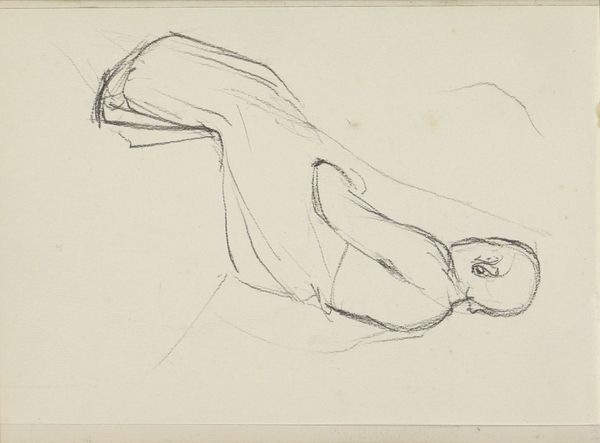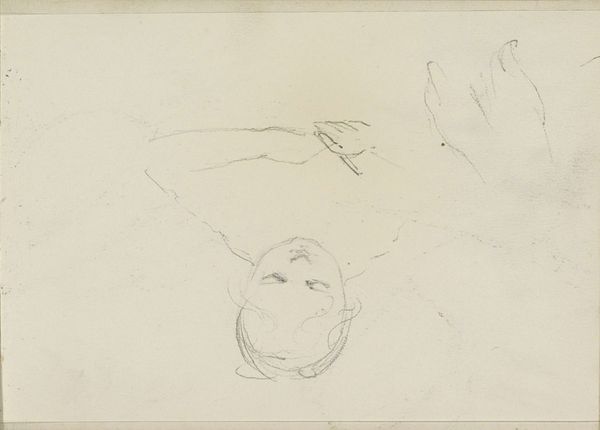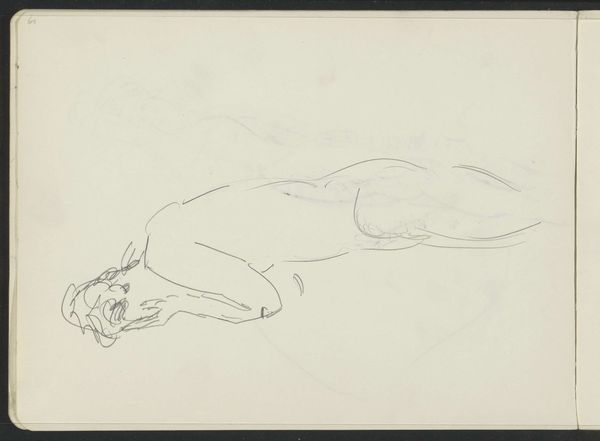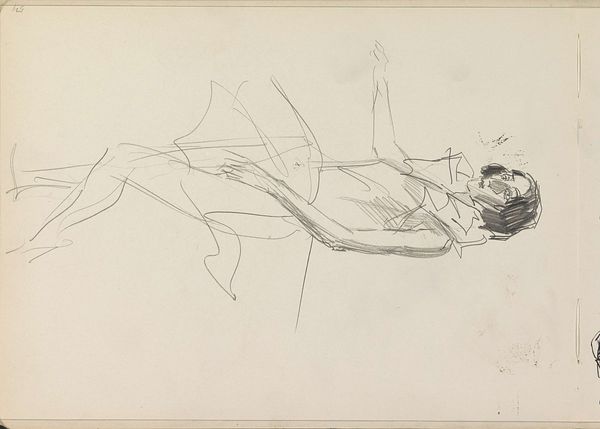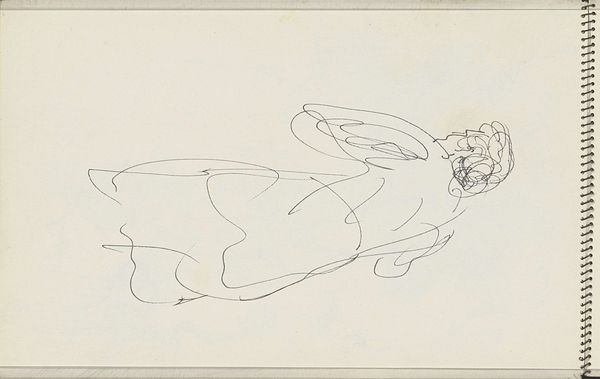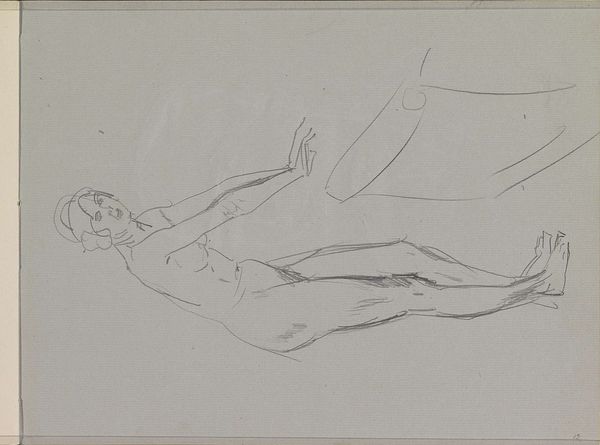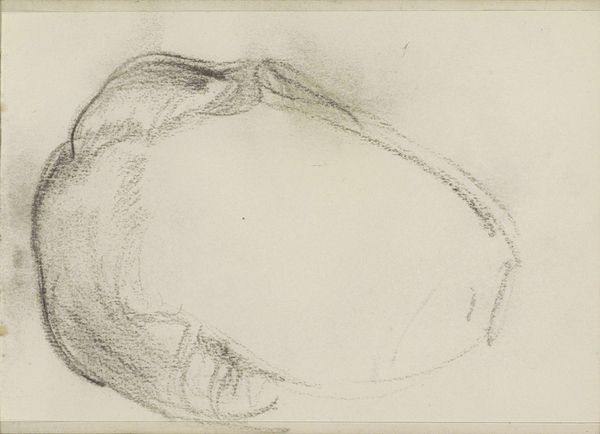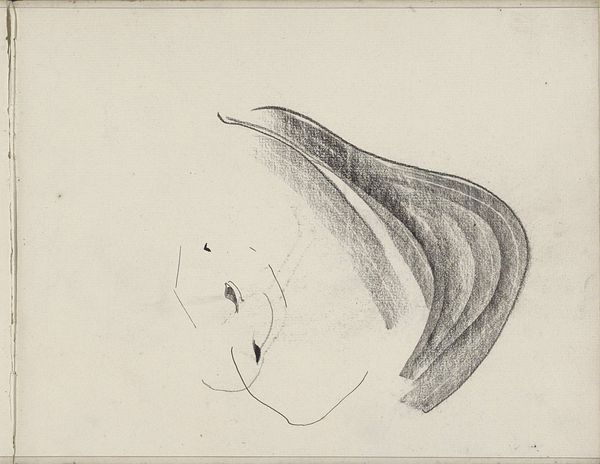
drawing, pencil
#
drawing
#
amateur sketch
#
imaginative character sketch
#
light pencil work
#
pencil sketch
#
landscape
#
figuration
#
personal sketchbook
#
idea generation sketch
#
ink drawing experimentation
#
pencil
#
sketchbook drawing
#
portrait drawing
#
initial sketch
Copyright: Rijks Museum: Open Domain
Editor: So this sketch is entitled “Vogel, vermoedelijk een arend” – translated, “Bird, presumably an eagle.” It was done between 1865 and 1913 by Bramine Hubrecht and it’s a pencil drawing. There's something about the looseness of the lines that makes it feel very immediate, like a quick observation. What’s your read on this work? Curator: The immediacy you perceive, that sketch-like quality, speaks to the democratizing effect of readily available and relatively inexpensive materials such as pencils and paper. Who was Hubrecht and what societal shifts were occurring at that time that could illuminate our understanding of such a work? Was Hubrecht independently wealthy? Her social class and access to leisure time could explain the drawing’s existence. Editor: I see what you mean! It wasn't commissioned for public consumption; maybe just a personal study? I read she was the daughter of a theology professor; her family might've supported artistic pursuits, allowing her freedom to create outside of needing to produce saleable art. Curator: Exactly. The "presumably an eagle" portion of the title suggests an ambiguity—perhaps the bird wasn't readily identifiable or the artist herself felt uncertain about it. Think about what an eagle symbolized during this era; it was used quite heavily as a political symbol. Could there be any implied political connotations or is the drawing purely representational? What would an expert ornithologist say? Editor: That's a great point about the eagle as a symbol. I didn't initially think of the potential political implications. Maybe there is commentary here about power? Curator: Or perhaps there is commentary on the lack of power! Given that she was female, do you think there may be implied messaging? And remember this drawing resides in the Rijksmuseum in Amsterdam... How did it come to reside there? Who decided to add this piece to the permanent collection? Editor: I hadn't even considered its journey to the museum. I guess every work carries a narrative, right? Curator: Indeed! Context shapes perception and bestows artwork with a life of its own. Editor: That’s a really enlightening way to think about art. Thanks!
Comments
No comments
Be the first to comment and join the conversation on the ultimate creative platform.
